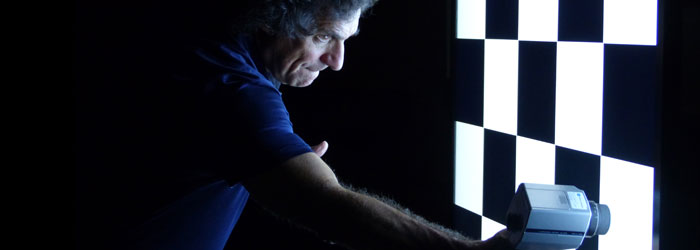 InfoComm International, the trade group representing commercial integrators, announced this week that they have created and set a new standard for integrators called Cable Labeling for Audiovisual Systems (CLAS). This new standard puts forth new requirements for the labeling of cables in an AV system, and is meant to “harmonize” practices among integrators.
InfoComm International, the trade group representing commercial integrators, announced this week that they have created and set a new standard for integrators called Cable Labeling for Audiovisual Systems (CLAS). This new standard puts forth new requirements for the labeling of cables in an AV system, and is meant to “harmonize” practices among integrators.
See more on this important announcement…
According to the trade group, their new standard will provide for “the easy identification of all power and signal paths in a completed system.” For those of us who run cabling, this can be a significant issue. InfoComm says that with proper and consistent labeling, integrators will be aided in the “operation, support, maintenance and troubleshooting of AV systems.”
Integrators often tell us that when they are called in to troubleshoot an unsuccessful installation, whether a DIY attempt or from another installation company, it can often be a nightmare to trace cable paths. Often, system failures result from poor installation discipline. In one way, InfoComm’s new labeling standard seeks to provide a small degree of assistance with clear and consistent labeling.
“Consistent, clear labeling of interconnected cables, which serve as the core of integrated systems, is very important,” said John Bailey, CTS-D, DTS-I, Vice President of Technology at Whitlock and chair of the InfoComm task group that developed the CLAS standard. “It is critical that cables are labeled in a consistent and methodical ways, especially as large, complex and facility-wide systems become more commonplace.”

A New Process of Standards Setting
InfoComm will present this new standard at a free session during the Integrated Systems Europe (ISE) 2016 show in Amsterdam in early February. Anyone interested in attending can register at this link: iseurope.org/infocomm-standards-plenary-session.
According to the announcement released by InfoComm, this standard is part of a new process for the organization – a process designed to fast track consensus standards that are specific to the AV community. InfoComm is a member of the American National Standards Institute (ANSI), a multi-disciplinary standards organization. However, this new cable labeling standard was developed outside that organization, as it is so specific to AV, that it is not “something that allied trades would necessarily refer to.”
Still, the organization said that this non-ANSI standard was pursued “using the same principles of openness, balance, consensus and due process.”
Speeding Up the Process
“We took the best practices of standards development and streamlined some of the rigor required by third-party accreditation,’ Bailey explained. “By doing this, we can bring to market industry-specific AV standards faster while still focusing on broader ANSI-accredited standards.”
In fact, InfoComm, an ANSI Accredited Standards Developer (ASD) has at least six ANSI-certified standards. They also have a joint standard with the Custom Electronic Design & Installation Association (CEDIA) and the Consumer Technology Association (CTA) governing the use of audio, video, and control architectural drawing symbols.
“InfoComm thanks the committed volunteer experts who guided and authored the Cable Labeling for Audiovisual Systems standard,” said Ann Brigida, CTS, CStd, Director of Standards for InfoComm International. “The development by InfoComm of AV industry-specific standards is possible, in part, due to the success, recognition and authority established over nearly a decade of developing ANSI-accredited standards. This new development process will get AV standards into the hands of professionals who need them as soon as possible so they can adopt industry best practices and drive their businesses forward.”
Included Requirements
After a fairly rigorous development process, InfoComm presented the standard to the AV industry for review and comments, which were collected and, where appropriate, incorporated into the final draft of the standard. According to the announcement, the final standard includes “guidance on required primary elements as well as unique identifiers; other identifiers, such as those for cables meant to be accessed by users; and cable label characteristics, including durability, legibility, text fonts, location and orientation.”
Cable Labeling for Audiovisual Systems is available for free to all InfoComm members. Non-members of InfoComm can purchase it through the ANSI or IHS standards stores.
See more on InfoComm at: www.infocomm.org.





Leave a Reply